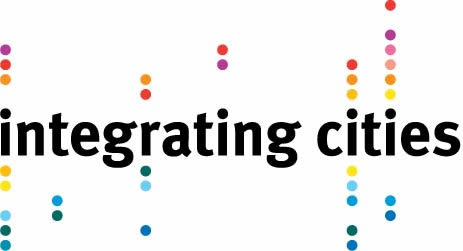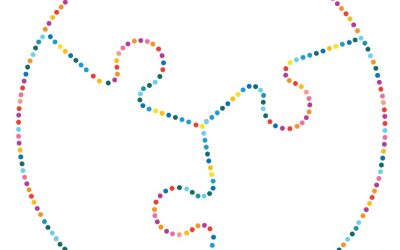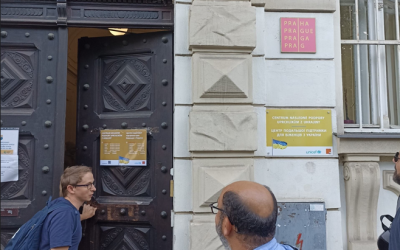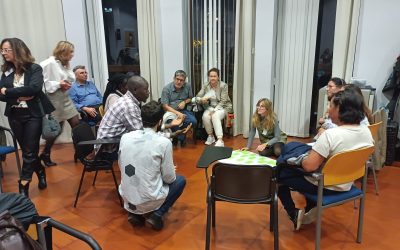his year, newspapers are littered with ominous headlines such as ‘Latvia, a disappearing nation’ (from Politico) highlighting the massive emigration that has seen the nation lose almost 20% of its population in under two decades. But while Latvians are going abroad to find employment, integrate into new cultures and create bright futures for themselves, Riga, the nation’s capital, is also seeing groups of people arrive from other countries with that same hope in their hearts.
Integration works two ways.
Riga City Council’s department of education, culture and sports, which coordinates integration in the city is currently redefining its integration programme for the next five years. The previous programme saw integration as a dynamic and two-way process of mutual understanding, and defined diversity in society as richness and not a threat. The new programme will strengthen this position by bolstering support activities for integration, especially Latvian language and integration courses. It will also increase the capacity of municipal employees dealing with newcomers, such as teachers and social workers, and spread information on cultural diversity and non-discrimination.
"In Riga, we have more vacancies than people to take them. We are preparing for potential arrivals of migrants in the future by learning from Barcelona about how to support migrants into employment. Co-operation networks and partnerships are key." @IntegratingCTs pic.twitter.com/SZaOf3nbJ4
— MigrationWork CIC (@migrationwork) November 6, 2018
MIGRATION CLIFFHANGERS
Currently, integration in Riga is not a steady slope, but is interrupted by some major cliffs over which migrants must plunge. For refugees in particular, support is cut off very sharply once they are granted permission to leave the reception centre. With little or no knowledge of the Latvian language and culture, or the layout of the city, they are sent out into the streets. Those who remain unemployed can avail of some services in health, education and housing, but all of these, along with language classes, are cut off the moment that an individual finds employment. This situation disincentivises work and makes it less likely that people who do find work will succeed.
WORKING WITH NGOS
The city is doing what it can to improve this situation. Riga wants to increase the provision of language and integration courses, involve newcomers in cultural events, especially as volunteers, and to create more events that promote contact between migrants and the incumbent population.
Funding for such activities remains a hurdle, however, and to overcome this Riga works together with NGOs and volunteer organisations to pick up where the state leaves off. The NGO Shelter Safe House, for example, runs a number of projects, such as the Information Centre for Newcomers, which is co-funded by the EU. Here, individuals can receive information on social and legal issues regarding life in Latvia, including issues related to entrepreneurship, as well as find and receive psychological support.
Because the number of newcomers in Latvia is currently quite low, the NGO has been able run a programme that, with 2 social workers and 10 social mentors, has provided individualised support to 340 people so far. Funding for such organisations, however, also presents an issue, as it is mostly based around awards for projects. This means it is not dependable enough to structure solid long-term policy around.
Mr. Riga from Aleppo, une belle histoire entre Riga et Alep. https://t.co/bxYKI4m5Xp
— Marielle Vitureau (@MVitureau) October 26, 2017
TIME TO ACT
When Latvia was visited by the Cities Grow project team, along with their mentor city Barcelona, the main conclusion that the group came to was that Riga needs greater levels of collaboration and coordination with the national government and volunteer organisations. Now, while the number of refugees in Latvia is still small, is the time to set up good protocols on cooperation of different stakeholders on integrating newcomers. Each municipal department could, for instance, provide a contact point for the NGOs dealing with newcomers who would know how and where to refer people for different services.
Working together with the Cities Grow team, Riga has come up with an action plan for improving integration. The first step will be mapping and setting up a network of all city, state, private and NGO bodies relevant to integration, and developing a clear protocol allocating complimentary activities to each of them. This will allow the city to design appropriate referral pathways for all migrants in key areas such as employment, housing, language, health, legal services and childcare.
The biggest school in #Riga : visiting with @EUROCITIEStweet CitiesGrow project to look at migrant integration. Facilitating for @migrationwork . 3 classrooms renovated every year. Wonderful new sports facilities. 700 pupils 7 – 16. Working hard to integrate migrant children pic.twitter.com/NWNHRvqmMV
— Sue Lukes (@SueLukes) May 23, 2018
FORTIFIED BY IMMIGRATION
A core element of the action plan is getting better data on migrant numbers and specific problems so that more and more specialised social workers can be recruited. Alongside this, the city will develop a short-term accommodation project, combined with a possible tapering accommodation subsidy, as pilot for people who need to regularise their status and for those who are in the process of entering the labour market.
Once Riga has gotten these actions going, we may see Latvia breaking into the newspaper headlines again, not as ‘a disappearing nation’ but as one that is alive and well, fortified by immigration and integration.



